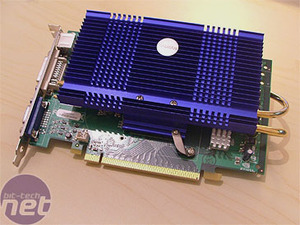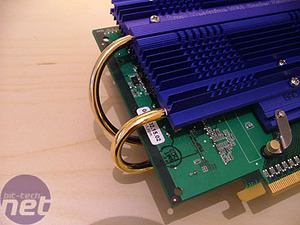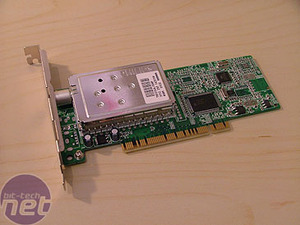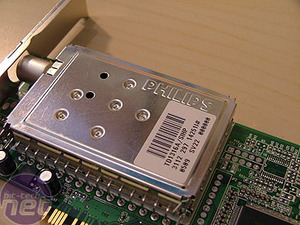Picking hardware for Media Center
September 5, 2005 | 13:25
Companies: #avermedia #hauppauge #microsoft #quiet-pc #zalman

Graphics cards
Your objective is two fold when it comes to graphics. First, you want the absolute best image quality possible. Second, you want the least noise and heat possible.The obvious question, then, is do you even want discrete graphics? Both Intel and ATI have motherboards that offer integrated graphics that are certified for Media Center (see the 945G and the Radeon Xpress 200P). Neither is going to set your world on fire when it comes to gaming performance, but both are perfectly capable of powering a Media Center system. If you're building on a budget, picking a board with integrated graphics can be a great way to save money without losing too much functionality.
If you want decent gaming performance, you will need to go for an add-in board, but your choices are again limited, this time by the space available in your case. For example, it's no good trying to squeeze a dual-slot cooler into a small form factor system. Likewise, some of the bigger silent heatpipe coolers will have a hard time squeezing into these systems, so you may have to settle for something with a quiet fan.
When it comes to heat, the answer is to avoid top of the range graphics cards. NVIDIA GeForce 6800s and 7800s are right out, and ATI Radeon X850s even more so. Throttle back the performance one notch and you can get a passively cooled X700 or 6600 for fairly sensible money. The performance will be reasonable for most games, with the bonuses of being completely silent and not costing you an arm & a leg to start with.
If space is tight in your system, you might want to consider an ATI All in Wonder card, a graphics card with a TV tuner built in. You won't have the fun of dual tuners, but it could be a good option for you. A 9600 AIW can be had for next to nothing these days, and will be a handy single slot solution.
In terms of heat, you can drop down even further and go to a passively cooled 6200 with TurboCache or X300 if you really don't care about gaming performance. However, if you get a 6200, be sure to get one that has at least 64MB of physical frame buffer because...
For the ultimate in image quality, you'll want to make use of Nvidia's PureVideo technology. This is a technology that operates on the graphics card in conjunction with a software MPEG 2 decoder which you can download. The PureVideo technology uses hardware to filter video for better image quality - correcting problems such as 4:3 pulldown, MPEG 2 artefacting and the like. You'll need a card with 64MB frame buffer physical, and ideally 128MB. A 6600 is a good bet here.
Below is a GeForce 6600 modded with a Zalman cooler - silence, PureVideo support and not bad at gaming, either.


TV tuners
Ideally, it is best to have two TV tuners in your box so you can watch one show whilst recording another. More than anything else, this is the component that WMCE is fussy about. If it's not on the approved list of tuners, chances are it won't work, so check before you buy. You need to enure the two tuners you have are identical - you might be able to fiddle WMCE to use two different models, but it will be more hassle than its worth. You also need to make sure they have the same type of connection - WMCE will only support dual tuners if both tuners have exactly the same channel list coming in through the aerial.
When it comes to analogue, try and get a board that has support for hardware encoding of MPEG 2 streams. This will take some of the load off the processor. There are some boards that sport two analogue connections on a single board - these are handy if space is tight in your chassis. Both Hauppauge and Avermedia, the two big names in this sphere, have cards that support this.
Some tuners sport one digital and one analogue - unless you have a specific use, these are a little useless. We looked a Haupagge one a couple of weeks ago. They're great if you don't want to have to upgrade your tuner if you move to an area that supports digital.
The idea setup is dual digital tuners, for superior picture quality, performance and flexibility. Pictured below is an Avermedia A16A, which is on the approved list and works a treat. Digital tuners don't need MPEG 2 encoding, since DVB standard TV is already encoded in MPEG 2.
Here is the final thing you need to know: although Media Center only supports dual tuners in most cases, you can, however, add a third one - purely for HD video. You'll need a fast video card, with 128MB of memory according to Microsoft. Software configuration for this is tricky - but it can be done. HD tuners are starting to become more common, with solutions from companies like Avermedia and Humax.



MSI MPG Velox 100R Chassis Review
October 14 2021 | 15:04





Want to comment? Please log in.